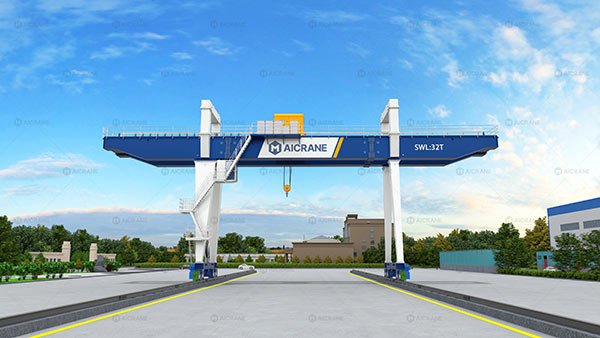


Here are the key benefits of incorporating a cantilever design in gantry cranes.
Cantilever gantry cranes play a vital role in many industrial applications, offering flexibility, enhanced reach, and space-saving benefits that make them highly desirable in specific lifting environments. The cantilever design refers to the extension of the crane’s girder or beam beyond its supporting legs, allowing the hoist to operate beyond the span of the gantry. This structural modification, although simple, brings several significant advantages that can enhance efficiency, safety, and operational convenience. Below are the key benefits of incorporating a cantilever design in gantry cranes.
One of the most obvious advantages of the cantilever design is its ability to provide an extended reach beyond the crane’s main span. This is particularly useful when the crane needs to load or unload materials from areas outside the rail tracks or working area, such as onto trucks, railcars, or platforms adjacent to the gantry system. The cantilever beam allows the hoist trolley to travel outside the normal boundaries, providing added flexibility in handling operations.
In facilities where space is limited or irregularly shaped, cantilever gantry cranes can maximize usability. Since the cantilever allows the crane to operate partially outside its own footprint, it eliminates the need for additional equipment or maneuvering space. This is especially beneficial in warehouses, shipyards, and construction sites where optimal use of available floor space is critical.
Cantilever gantry cranes are ideal for applications that require side loading or unloading. The projecting cantilever allows for easy access to delivery trucks, railcars, or storage racks positioned alongside the crane path. This makes them well-suited for industries dealing with bulky or long materials, such as steel beams, pipes, or precast components.
The extended lifting reach of a cantilever gantry crane may eliminate the need for additional lifting equipment like forklifts or secondary cranes to transfer loads from the gantry to another location. This can result in cost savings in terms of equipment investment, maintenance, and labor, while also simplifying workflow and reducing potential handling risks.
A cantilever gantry crane provides more design flexibility when planning or modifying site layouts. Because the crane can serve areas outside its rails, it can be integrated into complex environments more easily than traditional gantry cranes. This feature allows facility managers to adapt operations without major infrastructure changes, improving long-term adaptability.
With the ability to lift and move loads beyond the crane’s legs, cantilever gantry cranes can reduce the need for manual repositioning or temporary handling. This minimizes the risk of collisions, damage, or accidents, thereby creating a safer working environment. The smoother and more direct material flow also enhances operational safety and efficiency.
Cantilever gantry cranes can be designed with single- or double-sided cantilevers, depending on operational requirements. This customization makes them suitable for various industries, including logistics, construction, manufacturing, and shipbuilding. Whether handling oversized cargo or navigating a constrained workspace, the cantilever design offers tailored solutions to meet specific lifting needs.
The cantilever design in gantry crane for sale represents a smart structural enhancement that delivers practical advantages in terms of reach, space utilization, safety, and cost-efficiency. For industries seeking reliable and flexible lifting equipment, especially in space-constrained or complex working environments, cantilever gantry cranes provide an effective and efficient solution. By understanding and leveraging these advantages, businesses can optimize their material handling systems and boost overall productivity.
